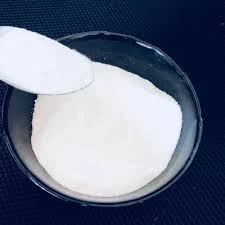
Dec . 13, 2024 18:32 Back to list
Hydroxyethyl Cellulose Viscosity and Its Impact on Various Applications and Formulations
Understanding Hydroxyethyl Cellulose Viscosity Characteristics and Applications
Hydroxyethyl cellulose (HEC) is a cellulose ether that has gained significant popularity in various industries due to its exceptional properties, particularly its viscosity. As a non-ionic polymer derived from natural cellulose, HEC is widely used in formulations ranging from personal care products to pharmaceuticals, food, and construction materials. This article delves into the characteristics of hydroxyethyl cellulose, its viscosity behavior, and its practical applications across different sectors.
What is Hydroxyethyl Cellulose?
Hydroxyethyl cellulose is synthesized by the etherification of cellulose with ethylene oxide. The resulting compound is a white, free-flowing powder that is soluble in cold and hot water, forming a clear or slightly cloudy solution. The degree of substitution (the average number of hydroxyethyl groups per anhydroglucose unit) influences its solubility and viscosity. HEC is known for being non-toxic, biodegradable, and non-allergenic, making it an attractive choice for many applications.
Viscosity Characteristics of HEC
One of the most significant properties of hydroxyethyl cellulose is its viscosity
. Viscosity, a measure of a fluid's resistance to flow, is crucial in determining how HEC will behave in a solution under different conditions. The viscosity of HEC solutions is influenced by several factors, including concentration, temperature, and the presence of electrolytes.1. Concentration Generally, as the concentration of HEC in a solution increases, the viscosity also increases. This relationship is essential for formulators who aim to achieve specific thickness and texture in products. The ability to control viscosity through concentration allows formulators to tailor products for specific applications, ensuring optimal performance.
2. Temperature Viscosity is temperature-dependent. As the temperature rises, the viscosity of HEC solutions tends to decrease. This property is vital in processes that involve heating, such as industrial mixing or cooking applications. Formulators must consider this behavior to maintain consistency in product performance during temperature fluctuations.
3. Electrolyte Interaction The presence of salts or other electrolytes can significantly influence the viscosity of HEC solutions. Certain ions can either enhance or reduce viscosity, depending on their nature and concentration. This dynamic is particularly important in formulations where ionic strength plays a crucial role, such as in cosmetic or pharmaceutical applications.
hydroxyethyl cellulose viscosity

Applications of Hydroxyethyl Cellulose
The unique viscosity characteristics of hydroxyethyl cellulose make it suitable for a wide range of applications across various industries
1. Cosmetics and Personal Care HEC is widely used in shampoos, conditioners, lotions, and creams. Its thickening properties help in achieving the desired texture and stability in these products. Furthermore, its ability to impart a smooth feel enhances the overall user experience.
2. Pharmaceuticals In the pharmaceutical industry, HEC is used as a binder in tablet formulations, as well as a viscosity modifier in suspensions and gels. Its non-toxic and hypoallergenic nature makes it a reliable choice for formulations intended for sensitive applications.
3. Food Industry HEC is sometimes utilized as a thickening agent and stabilizer in food products. It can improve the texture and mouthfeel of various items, ranging from sauces to dressings, ensuring a pleasant consumer experience.
4. Construction In construction, HEC is added to cement-based materials, enhancing their workability and extending open time. It helps in retaining moisture in plasters and mortars, improving adhesion and performance.
Conclusion
Hydroxyethyl cellulose is a versatile polymer with remarkable viscosity properties that cater to various industrial applications. Understanding its behavior concerning viscosity can help formulators optimize their products, ensuring consistency and performance across diverse applications. As industries continue to seek innovative solutions, hydroxyethyl cellulose is likely to remain a crucial component in formulations for years to come. With its eco-friendly profile and multifunctional capabilities, HEC stands out as a key ingredient in modern-day formulations, bridging the gap between functionality and sustainability.
-
Versatile Hpmc Uses in Different Industries
NewsJun.19,2025
-
Redispersible Powder's Role in Enhancing Durability of Construction Products
NewsJun.19,2025
-
Hydroxyethyl Cellulose Applications Driving Green Industrial Processes
NewsJun.19,2025
-
Exploring Different Redispersible Polymer Powder
NewsJun.19,2025
-
Choosing the Right Mortar Bonding Agent
NewsJun.19,2025
-
Applications and Significance of China Hpmc in Modern Industries
NewsJun.19,2025







